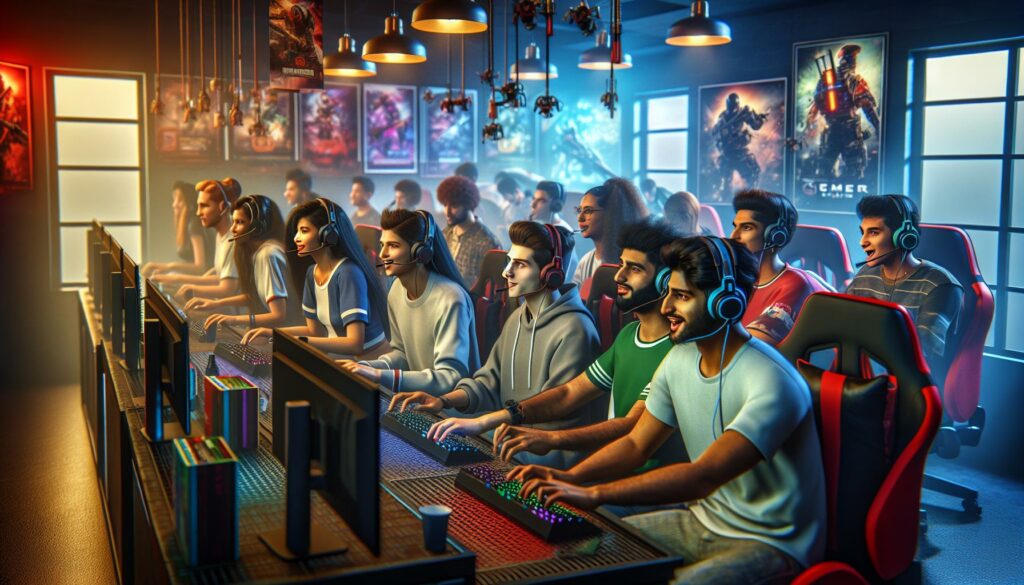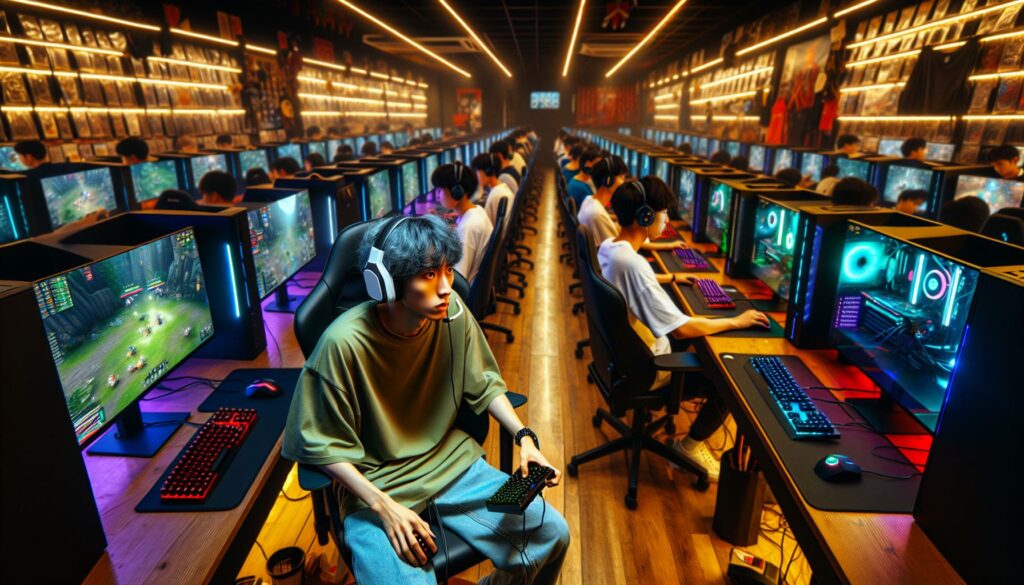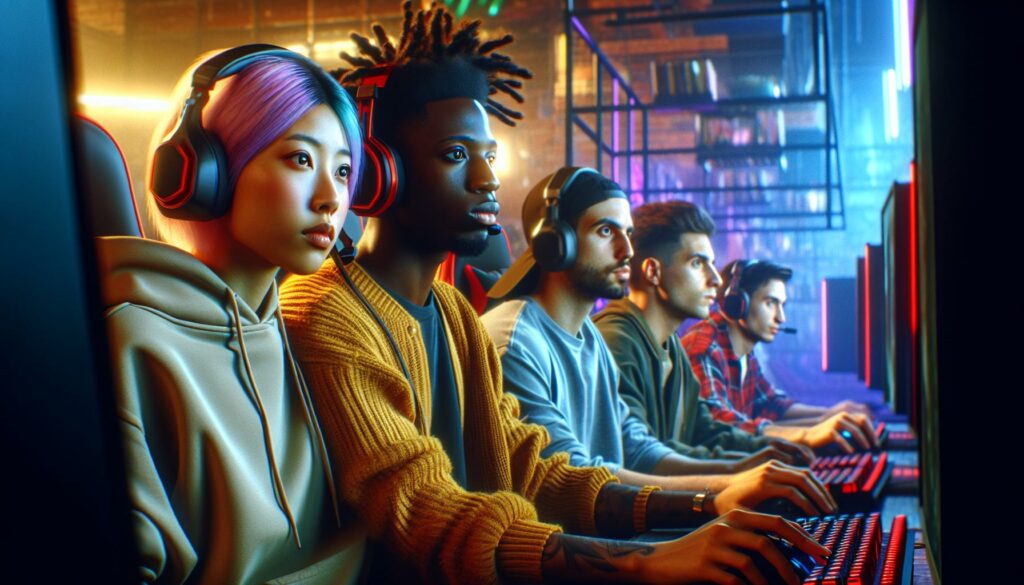Gaming in India has transformed from a casual pastime into a cultural phenomenon that’s taking the nation by storm. With over 400 million gamers and a market value exceeding $2.6 billion, India’s gaming landscape has evolved dramatically in the past decade. From mobile gaming enthusiasts crushing candies on their daily commute to professional esports athletes competing on global stages, the country’s gaming culture is experiencing an unprecedented boom.
The rise of affordable smartphones and accessible internet has democratized gaming across India’s diverse population. What started in cramped cyber cafes with Counter-Strike tournaments has blossomed into a thriving ecosystem of gaming cafes, professional tournaments and content creators. Today’s Indian gamers aren’t just playing – they’re building communities, pursuing careers and reshaping entertainment norms in ways that would’ve seemed impossible just a few years ago.
Gaming Culture in India
India’s gaming journey marks a significant transformation from traditional arcade centers to a thriving digital ecosystem. The gaming landscape evolved dramatically between 1990 and 2023, reflecting technological advancements and changing consumer preferences.
From Local Arcades to Mobile Gaming
Gaming in India began with arcade centers in metropolitan cities during the 1990s, featuring popular titles like Pac-Man, Space Invaders and Street Fighter. The 2000s introduced home gaming consoles including PlayStation, Xbox and Nintendo, limited to affluent households due to high costs. Mobile gaming emerged as a game-changer in 2010, with titles like Candy Crush Saga and Angry Birds reaching millions of Indian users. By 2023, mobile games account for 86% of India’s gaming market, driven by affordable smartphones and free-to-play models. Local developers now create culturally relevant games such as Raji: An Ancient Epic and Teen Patti, incorporating Indian mythology and traditions.
Impact of Internet Connectivity
The expansion of 4G networks transformed India’s gaming landscape after 2016. Internet penetration increased from 27% in 2015 to 47% in 2023, enabling multiplayer gaming experiences. Data costs dropped from $3.10 per GB in 2015 to $0.17 in 2023, making online gaming accessible to broader demographics. Battle royale games like PUBG Mobile and Free Fire gained massive popularity, attracting 175 million active players by 2022. Cloud gaming services entered the market, allowing players to stream high-end games without expensive hardware. The surge in connectivity fostered online gaming communities across platforms like Discord and YouTube Gaming.
Popular Gaming Platforms in India
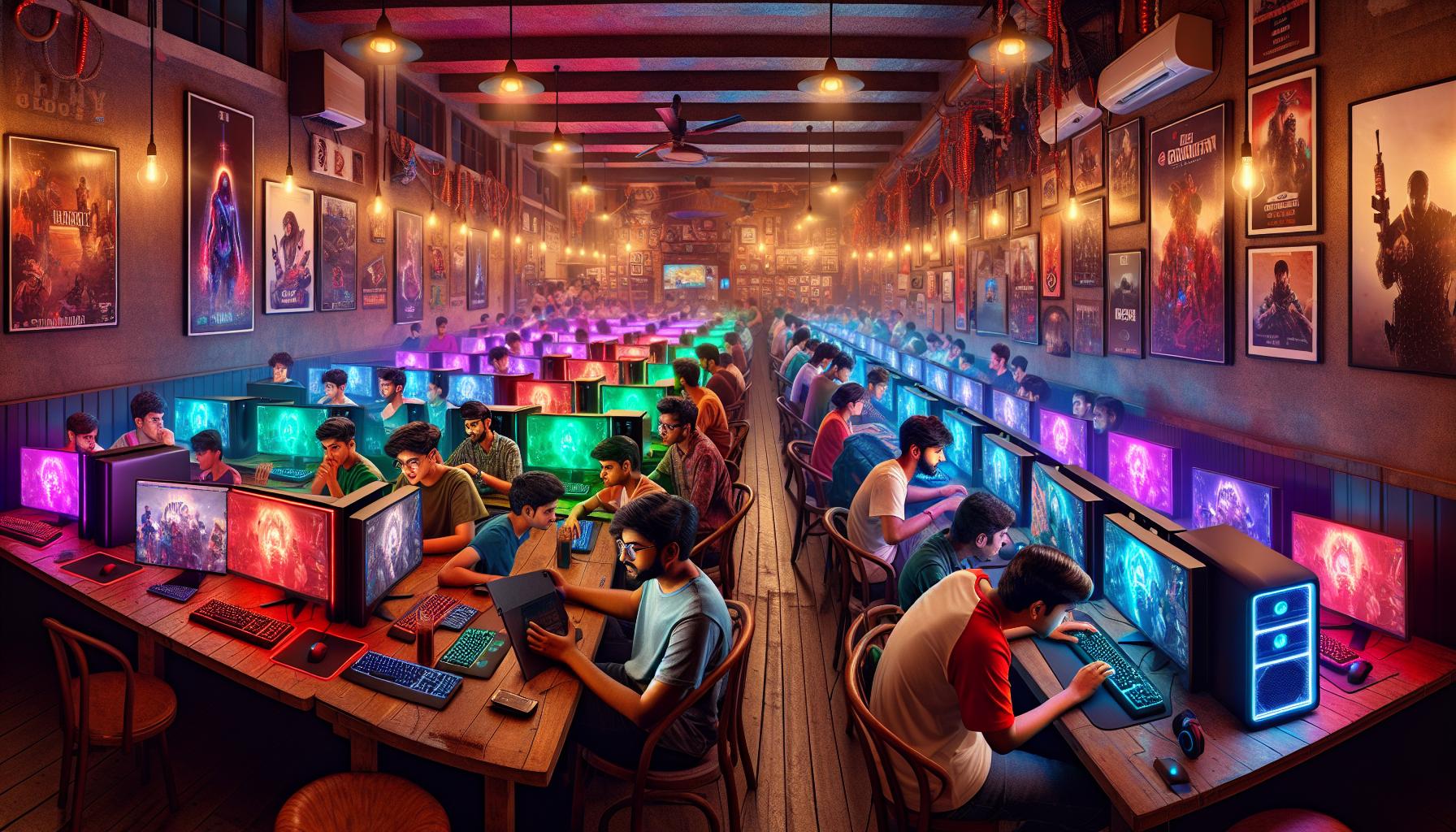
India’s gaming ecosystem spans across multiple platforms, each catering to distinct player preferences and demographics. The market shows a clear hierarchy in platform popularity, with mobile gaming leading the charge followed by PC and console gaming segments.
Mobile Gaming Dominance
Mobile gaming captures 86% of India’s total gaming market share, with over 350 million smartphone gamers. Popular titles like BGMI (Battlegrounds Mobile India), Free Fire, and Call of Duty Mobile dominate the mobile gaming space. The accessibility of budget smartphones priced between $100-$300 enables widespread adoption across urban and rural areas. Mobile gamers spend an average of 42 minutes per day gaming sessions, primarily engaging in battle royale, casual, and card games. In-app purchases generate $1.8 billion in annual revenue, with micropayments ranging from $0.50 to $5 being the most common transaction range.
PC and Console Gaming Communities
PC gaming accounts for 9% of India’s gaming market, centered around major cities like Mumbai, Delhi, and Bangalore. Popular PC games include Valorant, CS:GO, and Dota 2, with over 60,000 active players across these titles. Gaming cafes serve as community hubs, charging $0.50-$2 per hour for access to gaming rigs. The console gaming segment comprises 5% of the market, dominated by PlayStation (65%) and Xbox (35%) platforms. Exclusive titles like FIFA, God of War, and GTA V drive console sales, with 2.4 million units sold annually. Monthly gaming subscription services cost between $10-$15, attracting 800,000 subscribers across platforms.
Cultural Integration and Gaming
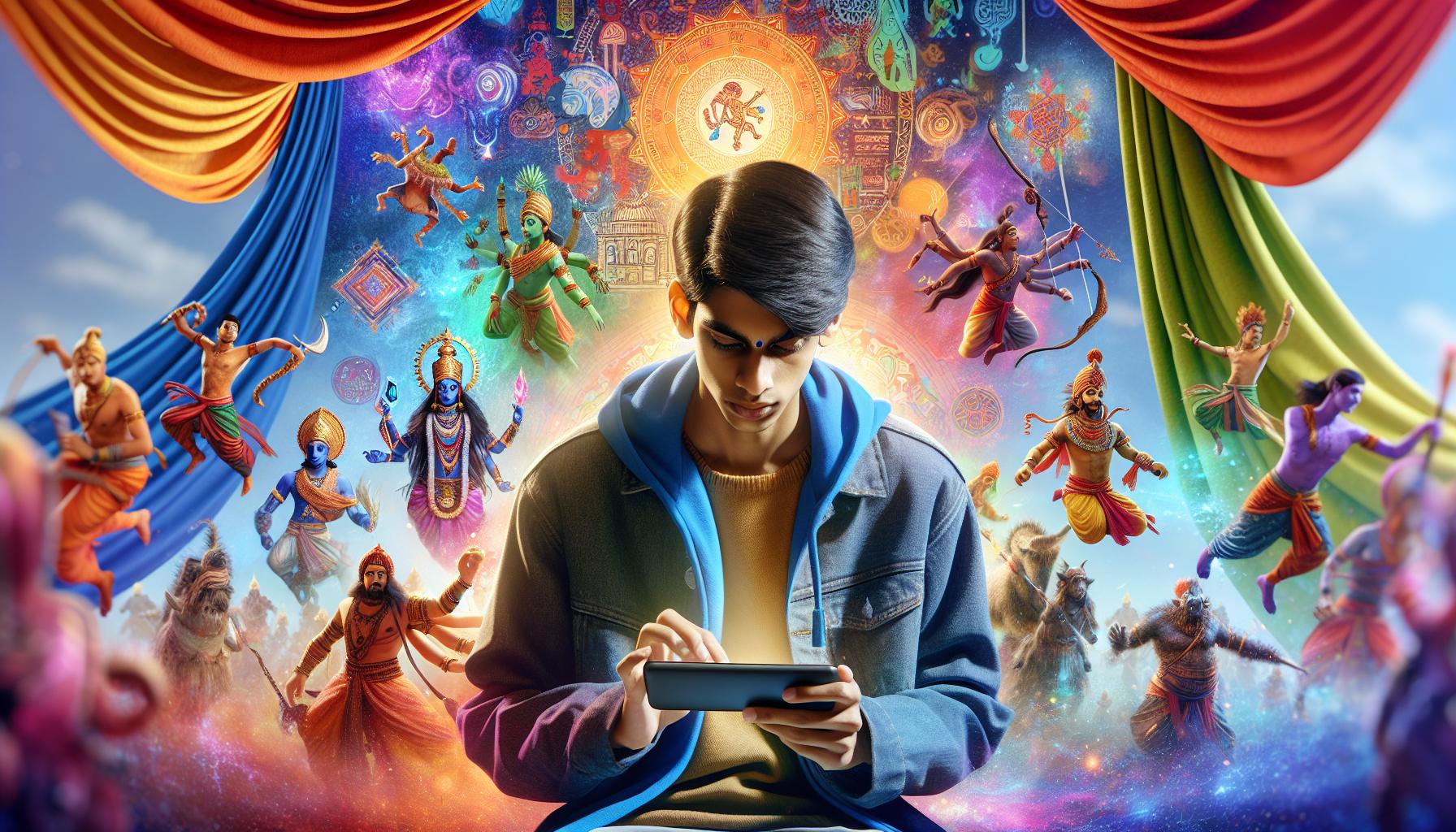
Gaming in India uniquely blends traditional cultural elements with modern digital entertainment. This integration creates distinctive experiences that resonate with Indian players while attracting global attention.
Influence of Indian Mythology
Indian mythology enriches game development through characters abilities tales from ancient texts. Popular mobile games like Raji: An Ancient Epic incorporate deities such as Durga Kali Vishnu into gameplay mechanics. Developers integrate storylines from epics like Ramayana Mahabharata creating narratives that connect with Indian audiences. The mythological elements appear in character designs weapon systems level architecture reflecting temple structures holy sites sacred symbols. Games featuring Indian mythology generated $175 million in revenue during 2022 marking a 45% increase from the previous year.
Localization of Game Content
Indian game developers adapt content to regional preferences languages cultural sensitivities. Top gaming companies localize their products in 15+ Indian languages including Hindi Tamil Telugu Malayalam. Cultural customization extends to in-game items featuring traditional outfits festivals seasonal events specific to Indian celebrations. Local references such as cricket Bollywood pop culture enhance player engagement driving a 60% increase in user retention. The localization market in Indian gaming reached $320 million in 2022 with investments in voice acting regional marketing culturally relevant modifications. Games with localized content show 3x higher engagement rates compared to non-localized versions.
Professional Gaming Scene
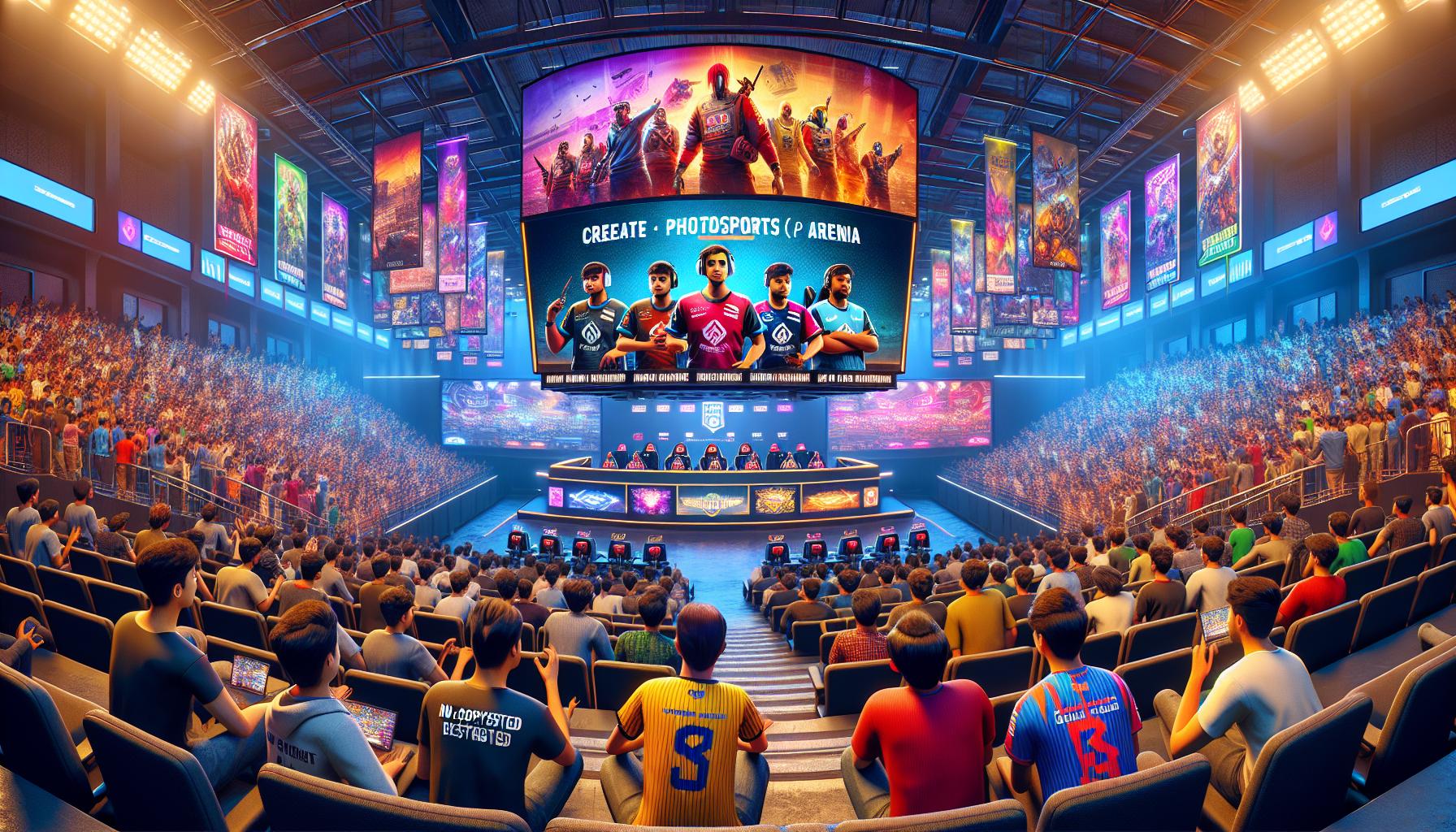
India’s professional gaming landscape has transformed into a competitive ecosystem valued at $1.5 billion in 2023. Professional teams compete in international tournaments across multiple game titles with significant prize pools attracting talent nationwide.
Rise of eSports Teams
Indian esports organizations like Global Esports Team SoloMid India Entity Gaming showcase the growth of professional gaming. These teams maintain dedicated rosters for popular titles including Valorant BGMI CS:GO generating $38 million in sponsorships during 2022. Top organizations provide gaming houses training facilities salaries enabling players to pursue full-time careers. Professional teams attract investments from venture capital firms sports celebrities contributing to a 65% annual growth rate in team valuations. Entity Gaming’s Valorant roster ranked among Asia’s top 5 teams in 2023 demonstrating India’s competitive potential.
Major Gaming Tournaments
Indian gaming tournaments feature prize pools exceeding $2 million annually. The ESL India Premiership attracts 65,000 participants across three seasons offering $135,000 in prizes. BGMI Pro League recorded 24 million viewing hours in 2022 making it India’s most-watched esports event. Dreamhack Delhi drew 20,000 attendees featuring international teams competing in multiple titles. Skyesports Championship 4.0 distributed $200,000 across regional tournaments in 8 languages expanding competitive gaming’s reach. Tournament organizers partner with brands like Intel AMD Red Bull creating sustainable esports ecosystems through consistent events sponsorships.
Social Aspects of Indian Gaming
Gaming culture in India extends beyond individual play, creating vibrant social networks through physical spaces and digital platforms. The social dynamics of gaming influence relationships, community building and family perspectives across diverse demographic groups.
Gaming Cafes and Communities
Gaming cafes serve as social hubs for Indian gamers, with over 15,000 establishments across major cities. These venues provide high-end gaming equipment and foster in-person connections among players who share gaming interests. Popular cafes like Nova Gaming in Mumbai and AFK Gaming in Bangalore attract 200+ daily visitors, hosting regular tournaments with prize pools ranging from ₹10,000 to ₹100,000. Online communities complement these physical spaces through Discord servers and WhatsApp groups, connecting over 50 million active users. Regional gaming communities organize local events, meetups and tournaments, creating support networks for aspiring players. Leading community platforms like Indian Gaming League report 85% monthly user growth, indicating strong social engagement among Indian gamers.
Family Perceptions and Acceptance
Family attitudes toward gaming in India show a marked shift from skepticism to gradual acceptance. Parents recognize gaming’s career potential, with 45% supporting their children’s gaming activities in 2023 compared to 15% in 2018. Gaming scholarships at universities and esports success stories contribute to improved perceptions. Studies indicate 65% of Indian parents now view moderate gaming as a beneficial social activity. Professional gamers earning ₹50,000 to ₹500,000 monthly demonstrate viable career paths. Educational institutions offering gaming-related courses report a 70% increase in enrollment, reflecting growing family support. Gaming events increasingly feature family participation, with 40% of tournament attendees including parent spectators.
Economic Impact
India’s gaming industry generates substantial economic value through multiple revenue streams, market expansion, and job creation. The sector contributes significantly to the country’s digital economy, with a market value of $2.6 billion in 2023.
Gaming Industry Growth
The Indian gaming market demonstrates exponential growth with a compound annual growth rate of 27% since 2020. Mobile gaming revenue reached $1.8 billion in 2023, driven by in-app purchases and advertising. Premium mobile games generate $250 million annually, while free-to-play titles earn $1.2 billion through microtransactions. Gaming hardware sales, including consoles, PCs, and accessories, contribute $420 million to the market. Foreign investments in Indian gaming startups totaled $550 million in 2022, with 75% focused on mobile game development. Local game developers earned $175 million through international partnerships and game exports.
Career Opportunities
The gaming industry creates diverse employment opportunities across multiple sectors. Game development studios employ 48,000 professionals, with salaries ranging from $15,000 to $80,000 annually. Esports organizations provide full-time positions to 12,000 individuals, including players, coaches, managers, and content creators. Gaming content creation supports 25,000 careers through streaming platforms, generating $120 million in revenue. Technology roles in gaming companies offer 15,000 positions in programming, design, and quality assurance. The industry supports 30,000 indirect jobs in marketing, events, and customer support. Gaming education programs at 150 institutions prepare students for industry roles, with 85% placement rates.
Challenges and Future Outlook
India’s gaming industry faces significant challenges despite its rapid growth, yet opportunities continue to emerge in this dynamic sector. The intersection of technological limitations and market potential shapes the industry’s trajectory.
Infrastructure Limitations
Limited internet connectivity in rural areas affects 65% of potential gamers, with average speeds of 25 Mbps compared to urban areas’ 100 Mbps. Power outages in tier-2 and tier-3 cities disrupt gaming sessions for 40% of active players, impacting tournament participation and streaming activities. High-end gaming hardware remains inaccessible to 80% of enthusiasts due to import duties raising prices by 28%. Data centers for game hosting are concentrated in 5 major cities, causing latency issues for players in remote regions. Cloud gaming services experience 45% higher latency compared to global standards due to infrastructure gaps.
Emerging Opportunities
Cloud gaming services are projected to reach $350 million in revenue by 2025, with 5G adoption enabling seamless gameplay across devices. Indian game development studios attract $800 million in investments, focusing on culturally relevant content. The rise of gaming content creation platforms generates $45 million monthly through subscriptions and advertising. Regional language gaming content experiences 85% growth in viewership, creating opportunities for localized experiences. Gaming education programs partner with 200 companies to offer specialized courses, maintaining a 90% placement rate. Blockchain gaming initiatives secure $150 million in funding, introducing new monetization models for developers and players.
Gaming Paradise
India’s gaming culture has transformed from a niche hobby into a dynamic multibillion-dollar industry that shapes entertainment social connections and career opportunities. The explosive growth of mobile gaming powered by affordable smartphones and widespread internet access has democratized gaming across the nation.
The blend of traditional Indian elements with modern gaming experiences creates unique opportunities for local developers while fostering a thriving esports ecosystem. As infrastructure improves and social acceptance grows gaming will continue to evolve as a significant force in India’s digital landscape.
The future looks promising with increased investments professional opportunities and technological advancements paving the way for India to become a global gaming powerhouse. This cultural shift represents more than just entertainment – it’s a digital revolution that’s reshaping how millions of Indians connect play and prosper.

